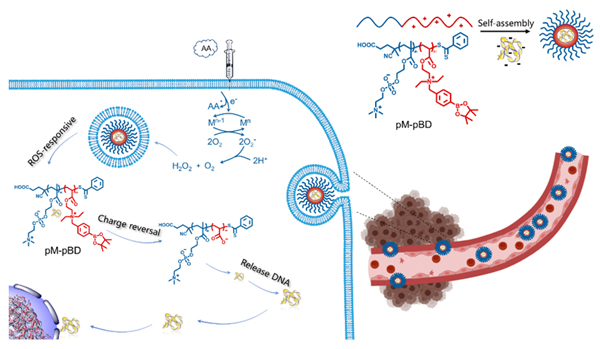| [1] |
Shen, Y.; Hu, G. X.; Zhang, H. X.; Qi, L. L.; Luo, C. C. Acta Chim. Sinica 2013, 71, 323. (in Chinese)
doi: 10.6023/A12110974
|
|
(沈银, 胡桂香, 张华星, 齐莉莉, 骆成才, 化学学报, 2013, 71, 323.)
doi: 10.6023/A12110974
|
| [2] |
Hirko, A.; Tang, F. X.; Hughes, J. A. Curr. Med. Chem. 2003, 10, 1185.
doi: 10.2174/0929867033457412
|
| [3] |
Nemunaitis, J.; Tong, A. W.; Nemunaitis, M.; Senzer, N.; Phadke, A. P.; Bedell, C.; Adams, N.; Zhang, Y. A.; Maples, P. B.; Chen, S.; Pappen, B.; Burke, J.; Ichimaru, D.; Urata, Y.; Fujiwara, T. Mol. Ther. 2010, 18, 429.
doi: 10.1038/mt.2009.262
|
| [4] |
Farmer, Z. L.; Kim, E. S.; Carrizosa, D. R. Oral. Maxil. Surg. Clin. 2018, 31, 117.
|
| [5] |
Rai, M. F.; Sandell, L. J. J. Am. Acad. Orthop. Sur. 2015, 23, 10.
|
| [6] |
Wirth, T.; Yla-Herttuala, S. Biomedicines 2014, 2, 2.
|
| [7] |
Lohr, M. Z.. Gastroenterol. 2006, 44, 4.
doi: 10.1159/000200097
|
| [8] |
Lin, G. M.; Li, L.; Panwar, N.; Wang, J.; Tjin, S. C.; Wang, X. M.; Yong, K. T. Coordin. Chem. Rev. 2018, 374, 133.
doi: 10.1016/j.ccr.2018.07.001
|
| [9] |
Prokofjeva, M. M.; Proshkina, G. M.; Lebedev, T. D.; Shulgin, A. A.; Spirin, P. V.; Prassolov, V. S.; Deyev, S. M. Biochimie. 2017, 142, 226.
doi: S0300-9084(17)30228-6
pmid: 28912093
|
| [10] |
Wang, Q.; Zhang, L.; Chen, S. J. China Basic Sci. 2017, 19, 21. (in Chinese)
|
|
(王嫱, 张琳, 陈赛娟, 中国基础科学, 2017, 19, 21.)
|
| [11] |
Li, S. D.; Huang, L. J. Control. Release 2007, 123, 3.
|
| [12] |
Liu, L.; Yang, J. Y.; Men, K.; He, Z. Y.; Luo, M.; Qian, Z. Y.; Wei, X. W.; Wei, Y. Q. Hum. Gene. Ther. 2018, 29, 110.
doi: 10.1089/hum.2017.226
|
| [13] |
Luo, D.; Saltzman, W. M. Nat. Biotechnol. 2000, 18, 33.
pmid: 10625387
|
| [14] |
Zhou, F.; Wu, C.; Han, F. X.; Zhao, Y. H.; Yuan, X. Y. J. Control. Release 2015, 213, E32.
|
| [15] |
Srinivas, U. S.; Tan, B. W. Q.; Vellayappan, B. A.; Jeyasekharan, A. D. Redox Biol. 2019, 25, 101084.
doi: 10.1016/j.redox.2018.101084
|
| [16] |
Zhao, W. J.; Qiao, Z. Y.; Duan, Z. Y.; Wang, H. Acta Chim. Sinica 2016, 74, 234. (in Chinese)
doi: 10.6023/A15120787
|
|
(赵文静, 乔增莹, 段中余, 王浩, 化学学报, 2016, 74, 234.)
doi: 10.6023/A15120787
|
| [17] |
Zhang, L. W.; Chen, Q. X.; Wang, J. Y. Acta Chim. Sinica 2020, 78, 642. (in Chinese)
doi: 10.6023/A20040116
|
|
(张留伟, 陈麒先, 王静云, 化学学报, 2020, 78, 642.)
doi: 10.6023/A20040116
|
| [18] |
Stone, J. R.; Yang, S. Antioxid Redox Sign. 2006, 8, 243.
|
| [19] |
Zhang, J. H.; Wang, W. J.; Zhang, J.; Xiao, Y. P.; Liu, Y. H.; Yu, X. Q. Eur. J. Med. Chem. 2019, 182, 111666.
doi: 10.1016/j.ejmech.2019.111666
|
| [20] |
Shim, M. S.; Xia, Y. N. Angew. Chem. Int. Ed. 2013, 52, 2926.
|
| [21] |
Chen, Q.; Espey, M. G.; Sun, A. Y.; Pooput, C.; Kirk, K. L.; Krishna, M. C.; Khosh, D. B.; Drisko, J.; Levine, M. Biochemistry 2008, 105, 11105.
|
| [22] |
Li, J. J.; Ke, W. D.; Wang, L.; Huang, M. M.; Yin, W.; Zhang, P.; Chen, Q. X.; Ge, Z. S. J. Control. Release 2016, 225, 64.
doi: 10.1016/j.jconrel.2016.01.029
|
| [23] |
Zhang, L. W.; Qian, M.; Cui, H. Y.; Zeng, S.; Wang, J. Y.; Chen, Q. X. ACS Appl. Mater. Interfaces 2021, 13, 6053.
doi: 10.1021/acsami.0c21422
|
| [24] |
Wang, J. Y.; Dou, B. R.; Rao, Y. M. Mat. Sci. Eng. C-Mater. 2014, 34, 98.
doi: 10.1016/j.msec.2013.08.035
|
